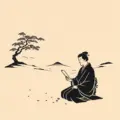Free verse poetry is a unique form of artistic expression that breaks away from the traditional rules and structures of poetry. It is a style that is not bound by regular meter, rhyme, or any other musical pattern, allowing poets to express their thoughts and emotions in a way that is unrestricted and free-flowing.
The beauty of free verse lies in its freedom. It allows poets to experiment with language, form, and structure, creating a unique and personal style. This freedom can be liberating, allowing poets to explore new ways of expressing their thoughts and emotions.
Despite its name, free verse is not entirely free. It still maintains a structure, albeit a flexible one. The structure of free verse is often determined by the natural rhythms and patterns of speech, rather than by a set meter or rhyme scheme. This can create a more authentic and organic feel, as the poem flows naturally, mirroring the rhythms of everyday speech.
Contents
The Role of Repetition in Poetry
Repetition is a powerful tool in the poet’s arsenal. It can be used to reinforce a point, increase emphasis, or create a rhythm. By repeating a word, phrase, or line, the poet can create a sense of unity and coherence, tying different parts of the poem together.
The Power of Repetition
Repetition can add depth and complexity to a poem. By repeating a word or phrase, the poet can draw attention to it, making it stand out. This can create a sense of emphasis, highlighting the importance of the repeated element.
Repetition and Memory
Repetition can also make a poem more memorable. Our brains are wired to remember patterns, and repetition creates a pattern that can be easily remembered. This can make the poem stick in the reader’s mind, enhancing its impact and resonance.
Repetition in Free Verse Poetry
In free verse poetry, repetition is often used to create a rhythm or a pattern. This can help to convey the emotion or the message of the poem more effectively. The repetition of certain words or phrases can create a sense of urgency, intensity, or emphasis. It can also help to highlight key themes or ideas in the poem.
Creating Rhythm with Repetition
Repetition can create a rhythmic pattern in a free verse poem. This rhythm can mirror the natural rhythms of speech, creating a sense of authenticity and immediacy. The rhythm can also reflect the emotion or mood of the poem, enhancing its emotional impact.
Highlighting Themes with Repetition
Repetition can also be used to highlight key themes or ideas in a free verse poem. By repeating a word or phrase, the poet can draw attention to it, emphasizing its importance. This can help to reinforce the central message or theme of the poem, making it more clear and impactful.
Types of Repetition
There are several types of repetition that can be used in free verse poetry. These include anaphora, epiphora, and polyptoton. Each of these types of repetition has its own unique effect and can be used to achieve different purposes.
Anaphora
Anaphora is the repetition of a word or phrase at the beginning of successive lines. This type of repetition can create a sense of rhythm and unity, tying the lines of the poem together. It can also create a sense of anticipation, as the reader waits for the repeated phrase to appear again.
Epiphora
Epiphora is the repetition of a word or phrase at the end of successive lines. This type of repetition can create a sense of closure, bringing the lines of the poem to a satisfying conclusion. It can also create a sense of emphasis, drawing attention to the repeated phrase.
Polyptoton
Polyptoton is the repetition of a word in different grammatical forms. This type of repetition can add depth and complexity to a poem, as it allows the poet to explore different aspects of a word or concept. It can also create a sense of rhythm, as the repeated word creates a pattern that can be easily followed.
The Impact of Repetition
Repetition can have a profound impact on the reader. It can create a sense of familiarity, making the poem more relatable and engaging. It can also create a sense of anticipation, as the reader waits for the repeated word or phrase to appear again. Furthermore, repetition can create a rhythmic pattern, which can enhance the musicality of the poem.
Creating Familiarity with Repetition
Repetition can create a sense of familiarity in a poem. By repeating a word or phrase, the poet can create a pattern that the reader can easily recognize and follow. This can make the poem more accessible and relatable, as the reader can easily understand and relate to the repeated elements.
Building Anticipation with Repetition
Repetition can also create a sense of anticipation in a poem. As the reader encounters a repeated word or phrase, they may begin to anticipate its return. This can create a sense of suspense and excitement, as the reader waits to see how the repeated element will be used next.
Enhancing Musicality with Repetition
Repetition can enhance the musicality of a poem. By creating a rhythmic pattern, repetition can give the poem a musical quality, making it more enjoyable to read or listen to. This can enhance the overall aesthetic experience of the poem, making it more engaging and impactful.
Repetition and Emphasis
Repetition can be used to emphasize a particular point or idea. By repeating a word or phrase, the poet can draw the reader’s attention to it, making it stand out. This can be used to highlight important themes or messages in the poem.
Drawing Attention with Repetition
Repetition can be used to draw attention to a particular word or phrase. By repeating this element, the poet can make it stand out, drawing the reader’s attention to it. This can be used to emphasize a particular point or idea, making it more noticeable and memorable.
Highlighting Themes with Repetition
Repetition can also be used to highlight key themes or messages in a poem. By repeating a word or phrase that is associated with a particular theme or message, the poet can draw attention to it, reinforcing its importance. This can make the theme or message more clear and impactful, enhancing the overall meaning of the poem.
Repetition and Rhythm
In free verse poetry, repetition can be used to create a rhythm. This can help to convey the emotion or the message of the poem more effectively. The repetition of certain words or phrases can create a sense of urgency, intensity, or emphasis.
Creating Rhythm with Repetition
Repetition can create a rhythmic pattern in a free verse poem. This rhythm can mirror the natural rhythms of speech, creating a sense of authenticity and immediacy. The rhythm can also reflect the emotion or mood of the poem, enhancing its emotional impact.
Conveying Emotion with Repetition
Repetition can also be used to convey emotion in a free verse poem. By repeating a word or phrase that is associated with a particular emotion, the poet can create a sense of urgency, intensity, or emphasis. This can help to convey the emotion more effectively, making the poem more emotionally resonant.
Examples of Repetition in Free Verse Poetry
There are many examples of repetition in free verse poetry. For instance, in Walt Whitman’s “Song of Myself”, the phrase “I celebrate myself, and sing myself” is repeated throughout the poem, creating a sense of unity and coherence.
Walt Whitman’s “Song of Myself”
In “Song of Myself”, Whitman uses repetition to emphasize the theme of self-celebration and self-expression. The repeated phrase “I celebrate myself, and sing myself” creates a rhythmic pattern that mirrors the natural rhythms of speech, creating a sense of authenticity and immediacy. This repetition also draws attention to the theme of self-celebration, making it more noticeable and impactful.
Other Examples of Repetition in Free Verse Poetry
There are many other examples of repetition in free verse poetry. For instance, in Allen Ginsberg’s “Howl”, the word “who” is repeated at the beginning of many lines, creating a sense of rhythm and unity. In e.e. cummings’ “i carry your heart with me(i carry it in”, the phrase “i carry your heart(i carry it in” is repeated, creating a sense of emphasis and emotional resonance.
Conclusion
Repetition is a powerful tool in free verse poetry. It can be used to create rhythm, emphasize key points, and enhance the overall impact of the poem. By understanding and effectively using repetition, poets can create memorable and impactful free verse poems. Whether it’s to draw attention to a particular theme, create a rhythmic pattern, or convey a specific emotion, repetition is a versatile and effective tool that can greatly enhance the art of free verse poetry.
- Glossary of Japanese Poetry Terms - 26 February 2025
- What is Waka Poetry? - 23 May 2024
- How to Identify the Kigo in a Haiku: - 22 March 2024





